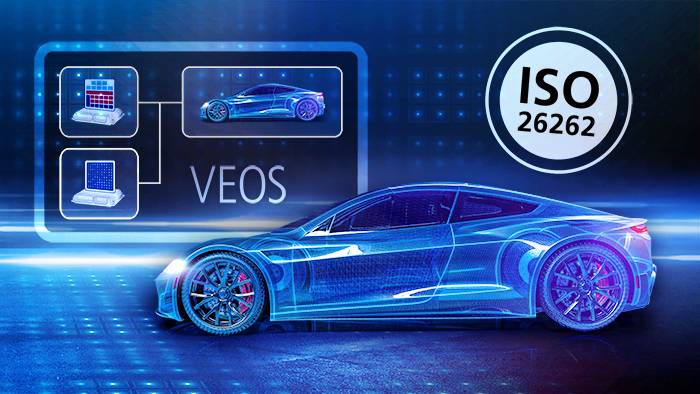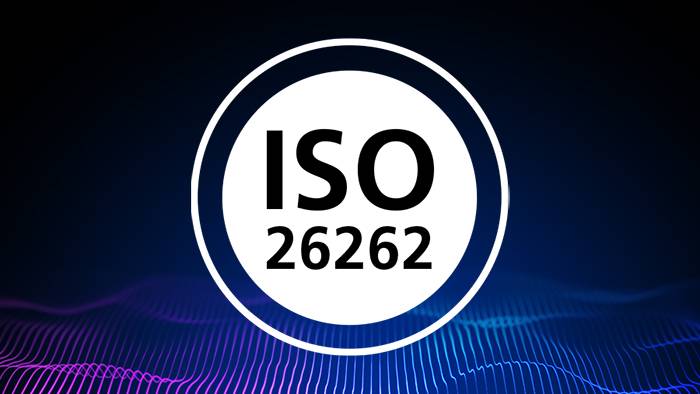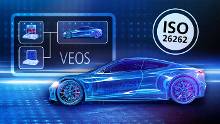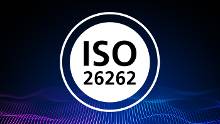VEOS
Platform for PC-based simulation of models and ECU network communication
VEOS is a PC-based simulation platform for electronic control unit (ECU) software validation in many development stages. It lets you simulate a multitude of different models – from function models to networks of virtual ECUs, bus systems, and vehicle models – even in early phases of development.
-
VEOS 2023-B
Co-simulation with VEOS; QEMU integration into VEOS simulation
-
Simulation on Linux operating systems
VEOS is now available for Linux operating systems (including build system and simulation).
-
Simulation of adaptive V-ECUs
You can integrate Linux-based virtual ECUs with adaptive applications into offline simulations with VEOS on both Windows and Linux operating systems. This allows you to test ADAS/AD functions in a virtual environment.
-
Copeland: Cool, Cooler, SIL
The heating, ventilation, and air conditioning (HVAC) manufacturer Copeland relies on software-in-the-loop simulation when validating its climate control units.The virtual test environment is based on VEOS. Thanks to a special toolset, the V-ECU SDK, getting started with SIL was much easier than expected.
-
General Motors: Everything Virtualized
To increase their testing capabilities, provide faster time to market, and enable development and validation of software-defined vehicles (SDV), General Motors has decided to create a completely virtual environment, which can provide a test interface similar to a physical test system. General Motors is working jointly with dSPACE and KPIT to realize a completely virtual, cloud-capable, scalable development and integration testing environment.
-
Toyota Relies on SIL Simulation from dSPACE to Improve Electrification Development
Of particular importance as a basis for new vehicle development is the powertrain with its corresponding ECUs. To develop and validate the powertrain, Toyota has strongly promoted the introduction of model-based development (MBD) and relies on the early use of simulation in the development process. At Toyota, SIL simulation is performed with VEOS.
-
Functional SIL stations at BMW
The higher the number of people involved in the development of ECU software, the more important it is to test the individual components early and realistically. BMW has chosen dSPACE VEOS as their central, PC-based simulation platform.
- Comprehensive, realistic simulation of ECU network communication for CAN, LIN, and Ethernet bus systems
- Seamless integration with RCP and HIL tool chains
- Openness through support of standards like FMI and the possibility of integrating third-party tools
Application Areas
dSPACE VEOS is a PC-based simulation platform that promotes SIL testing for the development of electronic control units (ECUs):
- Simulating a wide range of different models, such as function models, Functional Mock-up Units (FMUs), virtual ECUs (V-ECUs), and vehicle models, in the early development stages independent of any specific simulation hardware.
- For multi-model scenarios, VEOS supports importing, connecting, and running any number of function and plant models based on Simulink® or Functional Mock-up Interface (FMI), thereby extending the scope of the applications.
Key Benefits
VEOS runs on standard PCs, which gives function developers, software architects, and ECU testers a variety of valuable options for SIL testing during the early project phases:
- Available for Windows and Linux operating systems.
- Easy integration into cloud-based solutions for SIL testing.
- Co-simulation interface to integrate third-party tools into VEOS simulation.
- Flexible integration into the development process.
- Software-software integration can be tested from component to system level.
- Sophisticated environment models can be integrated with virtual ECUs to validate complex controller strategies or simulate and test entire virtual vehicles.
- Continuity throughout the entire tool chain and easy transition from SIL to HIL testing.
- Versatile options for integrating virtual ECUs, such as V-ECUs from different vendors or V-ECUs built for different architectures based on QEMU, etc.
Systematic Extension to the dSPACE Tool Chain
- Open interfaces to connect and use existing tools.
- Easy reuse of data, tools, and models between HIL simulations and SIL testing.
- ISO 26262 certification of VEOS and other dSPACE tools makes dSPACE the world's first provider of a fully certified tool chain for validating safety-relevant automotive functions. This enables users to drive their development and approval projects in a fully certified environment, for all automotive safety integrity levels (ASILs).
| Functionality | Description |
|---|---|
| PC-based simulation |
|
| Tool chain integration |
Off-the-shelf integration into tool chains:
|
|
Supported Standards and Protocols |
Description |
| FMI |
|
| AUTOSAR |
|
| XIL API |
|
| XCP |
|
PC-Based Simulation of Heterogeneous Models
VEOS offers a variety of functions to simulate heterogeneous models:
- Support of various model types: Simulink® and TargetLink models, FMUs, virtual ECUs, and ECU networks in a single environment directly on your PC.
- Support of Simulink® implementation containers (SICs).
- Identical user workflow across all supported model types for importing and connecting FMUs to other model interfaces.
- Variable and parameter access during simulation via ControlDesk, AutomationDesk, and XIL API.
- Debugging the source code.
Comprehensive Bus Simulation
With VEOS your bus simulation needs are covered:
- Simulation of virtual ECU networks.
- Support of automotive Ethernet, CAN, and LIN bus communication, including all bus-specific effects, without any additional hardware.
- Integration of bus simulation containers (BSCs) generated by the Bus Manager.
Efficiently Integrating Various Modeling Approaches
Compliance with FMI ensures that models created in various modeling tools can be exported as Functional Mock-up Units (FMUs) and that these FMUs can readily be integrated in VEOS-based virtual validation projects. In such projects, FMUs can be integrated together with other FMUs, virtual ECUs (V-ECUs), and Simulink® models. The user workflow for importing and connecting FMUs to other model interfaces is identical for all supported model types. Variable and parameter access during simulation is supported by ControlDesk, AutomationDesk, and XIL API.
Read this use case to learn more about integration testing of single and networked ECUs for the automotive industry in a software-in-the-loop environment.
ECU Integration Testing in a SIL EnvironmentRead this use case to learn more about integration testing of an individual vehicle ECU in a software-in-the-loop environment.
Functional Mock-up InterfacedSPACE supports the open FMI standard for an easy integration of simulation models from various sources.
Support of Multisensor ApplicationsVEOS supports bidirectional, low-latency communication with RTMaps, the component-based software development and execution environment from Intempora.
Software-in-the-Loop (SIL) TestingVEOS is part of the dSPACE SIL testing solution for PC- and cloud-based simulation.
- SIL Introduction What is software-in-the-loop testing - And how do I do it correctly?
- AUTOSAR Technology dSPACE supports the development of ECU software according to the AUTOSAR Adaptive Platform and the AUTOSAR Classic Platform.
- dSPACE Blog: How to Simulate Adaptive AUTOSAR V-ECUs in VEOS Read the blog post on how to develop and validate an adaptive control unit combination with classic ECUs and environment models.
Drive innovation forward. Always on the pulse of technology development.
Subscribe to our expert knowledge. Learn from our successful project examples. Keep up to date on simulation and validation. Subscribe to/manage dSPACE direct and aerospace & defense now.




